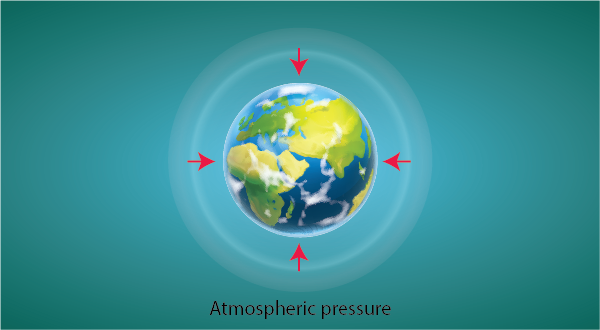Introduction
In science, a push or pull of an object is known as force. The interaction between two objects arises force. Force has both magnitude and direction. The strength of a force is expressed in magnitude. Force brings about a change in the direction or state of motion of a body. In class 8 Science chapter 11, various characteristics of force along with the types of force are discussed.
Push
A push is a force exerted away from the body, e.g: Hitting a snooker ball, kicking a football.
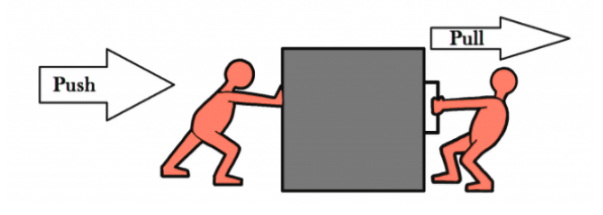
Magnetic force
The force of attraction or repulsion between two magnetic bodies due to their poles is known as a magnetic force.
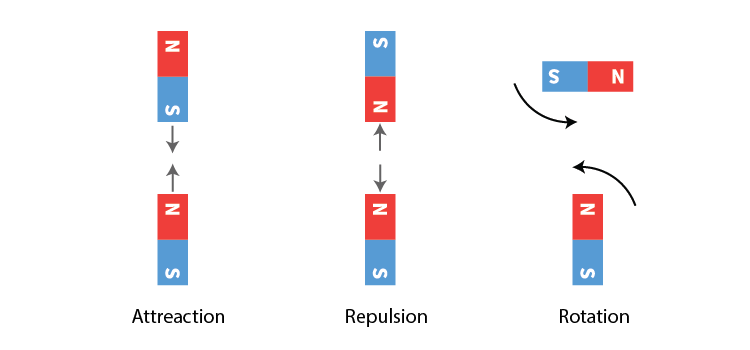
What Is It?
Pull
A pull is a force exerted towards the body, e.g: drawing a bucket of water from a well, playing tug of war.
Force
- A force is a push or a pull.
- The interaction between objects that can change the state of the objects.

Playing With It
Net force
- The resultant of all the forces acting on a body is known as net force.
- The acceleration of the body is along the direction of the net force.
Frictional force
- The force that opposes the relative motion between two surfaces.
- Acts between the surface of the two bodies in contact.
- Type of contact force.

What Can Force Do?
Vector
– Vector quantities are expressed in magnitude as well as the direction of the object. E.g: Velocity, displacement, weight, momentum, force, acceleration etc.
– Vectors are used to find the resultant component acting on a body.
– When multiple forces act on a body, they can be resolved into one component known as the net force acting on the object.
Example:
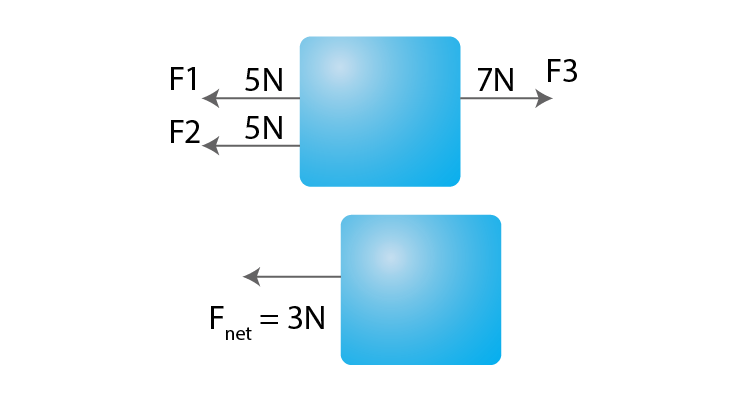
Vectors are also useful when the force acts at an angle to the horizontal.
Application of Force
– A force is an effort that changes the state of an object at rest or in motion.
– It can change an object’s direction and velocity.
– Force can also change the shape of an object.
State of Motion
The state of motion of an object is defined by its velocity – the speed with a direction. Thus, inertia could be redefined as follows:
Inertia = tendency of an object to resist changes in its velocity.
An object at rest has zero velocity – and (in the absence of an unbalanced force) will remain with a zero velocity; it will not change its state of motion (i.e., velocity). An object in motion with a velocity of 2 m/s, East; will (in the absence of an unbalanced force) remain in motion with a velocity of 2 m/s, East; it will not change its state of motion (i.e., velocity). Objects resist changes in their velocity.
Types of Forces
Contact
A touch or contact is required to do most of our everyday activities. E.g Lifting, pulling, kicking, pushing etc.
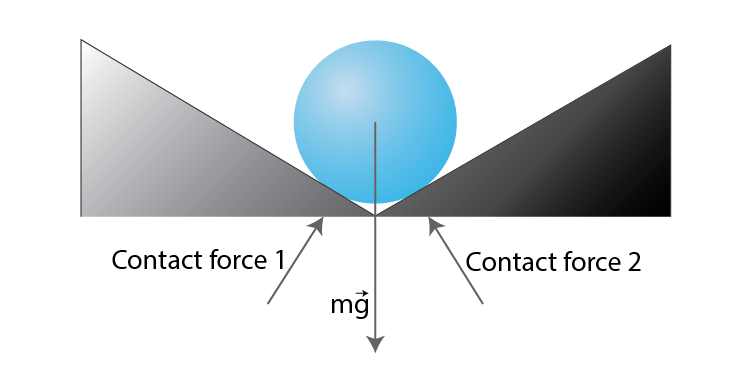
Contact forces
Forces that require a touch or contact to be applied are known as contact forces. E.g: Muscular forces, frictional forces

Muscular force
The force applied by the effort of our muscles e.g lifting a heavy box, pulling a bucket of water, pedalling a cycle.
Non-contact forces
- Forces that do not need a contact, or that have their influence without a touch.
- Example: magnetic force, electrostatic force, gravitational force.

Gravitational force
- The attractive force that a body experience towards the centre of the earth is called the force of gravity due to earth.
- Property of the universe, every object attracts or exerts a force on every other object.
Electrostatic force
The force of attraction or repulsion experienced by a charged body from another charged body in the same vicinity is known as Electrostatic Force.

Nuclear forces
- The nuclear force acts between all the particles in the nucleus. i.e., between two neutrons, between two protons and between a neutron and a proton.
- It is an attractive force in all cases.
- It is the force that keeps the nucleus intact by overcoming the enormous repulsive force between positive protons.
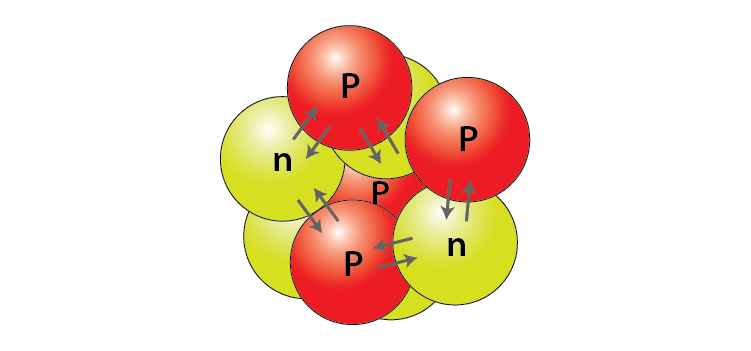
Thrust and Pressure
Pressure
- Force acting per unit area is known as pressure.
- P=force/area
- SI unit is Pascal.
Distribution of pressure
- Force acting on a smaller area applies more pressure than the same force acting on a larger area.
- Examples: Porters place a round cloth on their heads to increase surface area and reduce pressure.
- A sharp knife cuts better as more pressure is exerted over a smaller area.
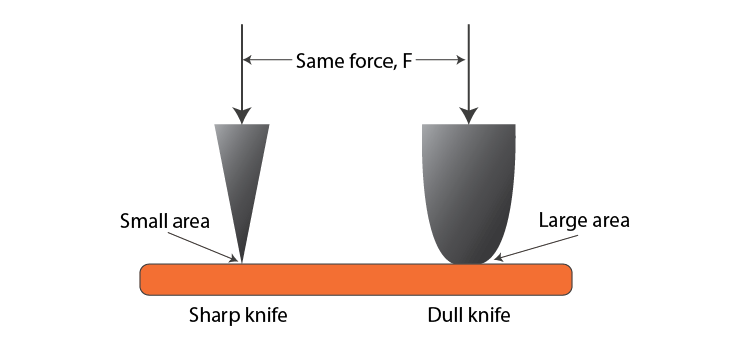
Pressure in fluids
The pressure exerted by a fluid(gases or liquids) in a container is transmitted undiminished in all direction on the walls of the container.

Upthrust
The upward force exerted by a fluid on an object is known as upthrust or buoyant force.
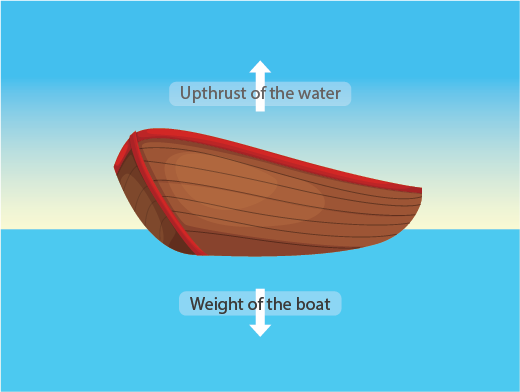
Atmospheric Pressure
Gaseous pressure
Gases exert the same pressure on the walls of the container in all directions.
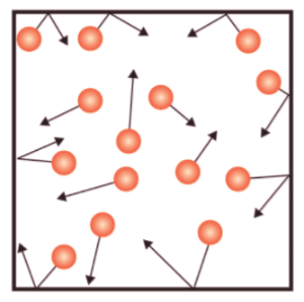
Atmospheric pressure
- Our atmosphere extends to several kilometres above sea level. The weight of the air acts as pressure known as atmospheric pressure.
- The pressure in our body balances the atmospheric pressure and that is why we do not feel it.
